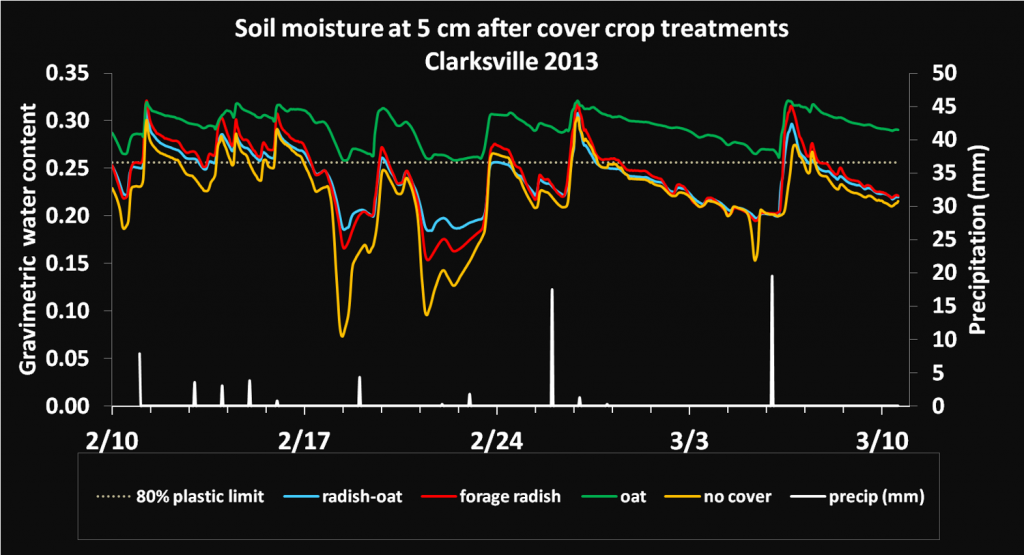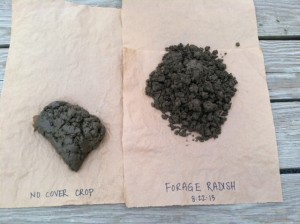Soil is born, so to speak, with a natural drainage class. Knowing a soil’s natural drainage before commencing farming can save a lot of heartache and headache! In spite of the inherent drainage class, management practices have a big impact on the soil moisture on a farm. Maintaining pore space (avoiding compaction) and organic matter dramatically influence a soil’s infiltration and water holding capacity. Cover crops can influence soil moisture dynamics in the long-term by contributing organic matter and improving soil aggregation as well as allowing for increased infiltration through biodrilling. In the short-term, cover crops can moderate soil moisture by the presence (or absence) of a moisture-conserving mulch.
Mulch retains soil moisture
High-residue cover crops can leave heavy mulch on the soil surface. This can be advantageous in droughty conditions. The moderating effects of mulch on soil moisture can help with common problems like blossom end rot on tomatoes, which occurs most frequently with extreme wet-dry cycles. Mulch changes soil temperature fluctuations, also. High-residue cover crops that leave a mulch are therefore beneficial for no-till planting many summer crops such as pumpkins, tomatoes, and broccoli, but are not advantageous for early spring crops that often require soil drying and warming.

Soil moisture after winterkilled cover crops in Maryland. The residue from oat prevents the soil from drying quickly. (NB: the radish-oat combination had a small proportion of oat). (unpublished data, Lounsbury & Weil 2013).

Silt loam soil in April in Massachusetts after no cover crop/weeds (left) and after forage radish cover crop (right). Photo credit: Julie Fine, UMass.
Lack of much allows soil drying. It may be obvious, but one of the problems with high-residue cover crops in spring is that they keep the soil cool and wet. Low-residue cover crops may be desirable for certain cover cropping niches such as prior to early spring vegetables. In addition to a lack of residue, forage radish roots appear to allow for greater infiltration. This means that while the surface soil dries out and is better for field work (photo at left), the subsoil retains moisture for later crop use. Without cover crops, this moisture might be lost as runoff (see related blog post on this topic)
Related Blog posts
Mud season in New England can be tempered by cover crops (April 7, 2014)
Sometimes, less is more when it comes to cover crop residue (March 24, 2014)
Continue to Explore the Cover Crop Web of Functionality




